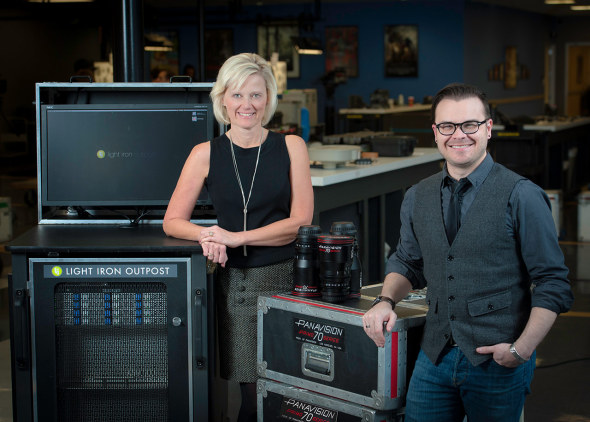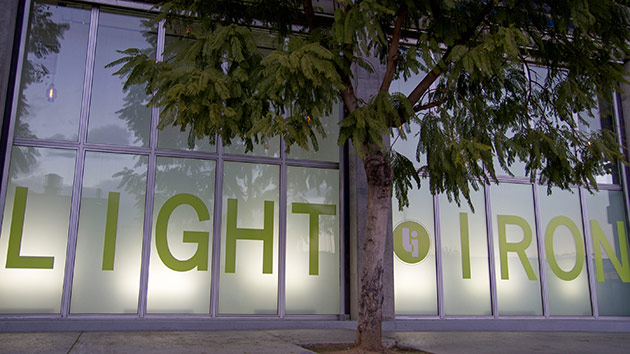Outpost Mobile Post Technology Will Be Incorporated into Panavision Services Worldwide
Panavision said it has reached an agreement to acquire Light Iron, the post-production company with offices in Los Angeles and New York. Light Iron's Outpost Mobile post systems for on-set production workflow will now be available through Panavision rental facilities worldwide, the companies said.
Founded in 2009, Light Iron quickly gained a reputation in Hollywood through its work on high-profile features including Ender's Game and Gone Girl, as well as on independent films, television, and commercial projects. In January 2013, the company bought Offhollywood's post-production operations and opened a facility in New York City. Light Iron is expected to operate as a wholly owned subsidiary of Panavision.

Panavision President and CEO Kim Snyder and Light Iron CEO Michael Cioni
"When you think of how the business of making motion pictures has been evolving, it became clear to us that customers are looking for end-to-end turnkey solutions in one piece and in one place," Panavision President and CEO Kim Snyder told StudioDaily. "We thought this was an awesome opportunity for us to come together [with Light Iron] and make a pretty significant impact."
Snyder said Light Iron's services will be rolled out immediately as part of Panavision's production portfolio, with further investments being made in the company's Outpost equipment. "Part of the marketing plan is to determine where we will prioritize those investments on an international basis," she said. "Initially, it will likely be North America—but there is production all around the world."
Light Iron CEO Michael Cioni said that the acquisition by Panavision addressed a question he had been considering—how to make the packaging of workflow services more efficient—while dramatically expanding Light Iron's global reach. "The challenge is, how do you efficiently build for runaway productions, and other people that want to shoot overseas?" he said. "You can do it piecemeal, with cameras separate from lenses, separate from lighting, separate from dailies, separate from back-up and visual effects. But this concept of the package is what people are after. It doesn't matter where you live—the farther you get from major cities, the more important the package becomes."
Cioni is adamant that Light Iron not be described as a "post-production" entity within Panavision. "What we're focusing on is not DI and finishing and color-correction," he said. "The focus is on the production side of things. Distinguishing dailies and archive and data management as post is incorrect. It's all part of the production process. Our production division, which is the Outpost side of things, will eventually be in every Panavision location."
Light Iron's knowledge base will inform any digital camera development at Panavision, as well, Snyder said. "We continue to invest at Panavision in camera technology as well as optical technology—and optics is one of the key differentiators of the company," she said. "We plan on leveraging [Light Iron's] expertise across all of our investments, using it to solve the problems customers have on set and rolling those solutions out internationally."
Light Iron's management will remain in place, Snyder said, adding, "They are the experts in workflow." And Cioni agreed: "Light Iron's head count will only continue to grow in response to demand. It's going to be serious and significant and very, very fun."
Crafts: Post/Finishing Shooting
Sections: Business
Topics: People & Places light iron Outpost Mobile
Did you enjoy this article? Sign up to receive the StudioDaily Fix eletter containing the latest stories, including news, videos, interviews, reviews and more.











Awesome Mike!